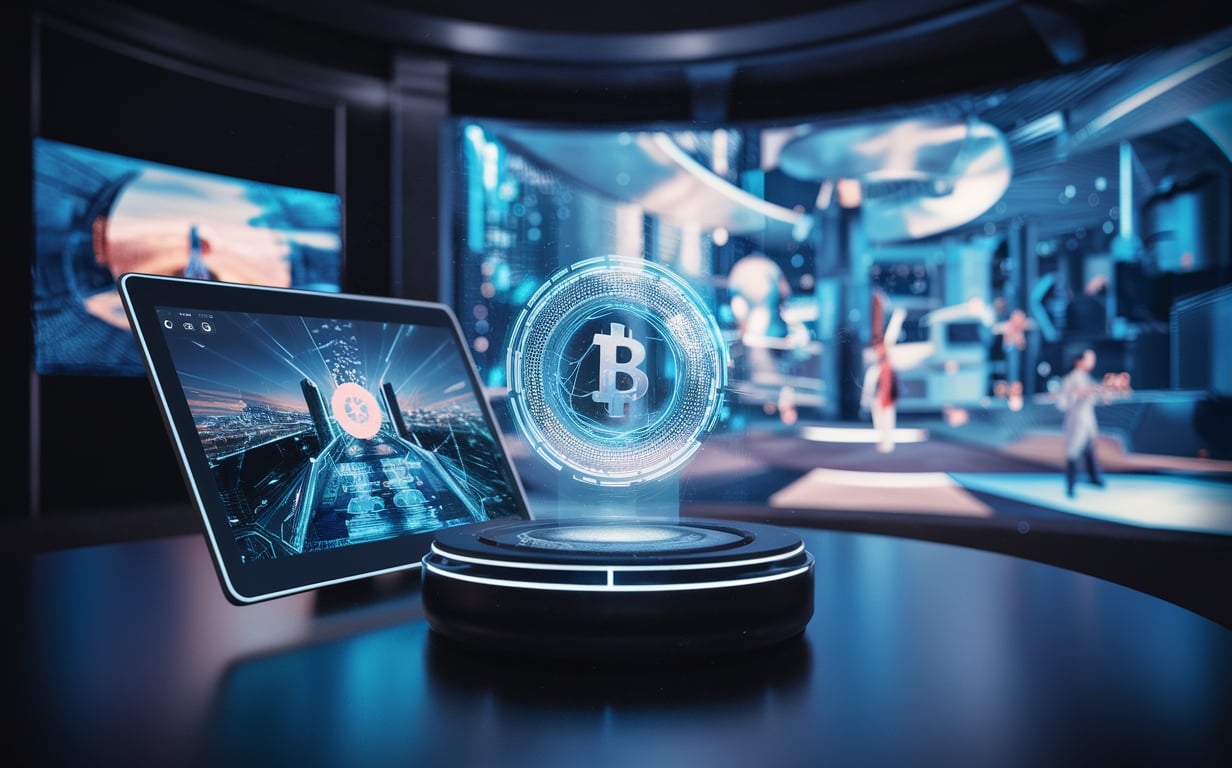Blockchain’s Function in Creating a Safe, Decentralised Meta verse
 Siddharth Pujara
Siddharth Pujara
Introduction
The Metaverse is an evolving digital space where people can engage in immersive virtual settings for work and play, rather than just a sci-fi concept. However, in this digital age, what is the foundation for trust, ownership, and security? blockchain technology. This essay will examine how blockchain technology is influencing the Metaverse’s future by guaranteeing decentralised management, safe digital assets, and smooth user interfaces.
What Is the Metaverse? The fusion of digitally generated areas and virtually augmented physical spaces creates the Metaverse, a communal virtual shared environment. People can live, interact, work, and create in a fully digital environment in this networked cosmos. Consider it a futuristic development of the internet, allowing users to fully immerse themselves in virtual environments through the use of augmented reality (AR),virtual reality (VR), and artificial intelligence (AI).
Blockchain: The Backbone of the Metaverse
Blockchain powers the Metaverse’s infrastructure, but it also presents fascinating new possibilities. The ownership, security, and transparency required for the Metaverse to flourish are guaranteed by this distributed ledger technology, which is decentralised. This is how the Metaverse depends on blockchain technology:
Decentralization: In order to prevent a single entity from controlling a sizable portion of the Metaverse, a decentralised structure is required. Blockchain facilitates this decentralisation by dispersing authority among multiple nodes, encouraging equity and transparency.
Digital Ownership and Non-fungible tokens (NFTs): Blockchain makes it possible to create and possess digital assets. You can possess digital art, virtual land, and other assets in the Metaverse. All of these things are safely stored on the blockchain, guaranteeing actual ownership.
Interoperability with Smart Contracts: Interactions across various virtual worlds can be carried out smoothly thanks to blockchain’s support for smart contracts. It guarantees automated transactions without the need for middlemen, resulting in a quicker and more secure transfer of digital goods and services.
Security and privacy: There is always a risk of hacking and data breaches in the virtual world. Blockchain’s cryptography systems protect identities and assets while enabling users to interact and transact in a secure environment within the Metaverse.
Monetisation and Virtual Economies: Blockchain enables safe and transparent cryptocurrency payments, and the Metaverse is home to numerous virtual economies. As a result, companies, developers, and content producers can monetise their goods and services without relying on conventional financial institutions.
Future of Blockchain in the Metaverse The degree of connection between the Metaverse and blockchain will increase as they both develop further. Blockchain will play a key role in everything from virtual world real estate transactions to online community decentralized governance. The boundaries between the real and virtual worlds will become increasingly hazy as a result of the convergence of these technologies, which will spur innovation in virtual economies, experiences, and ownership structures.
Conclusion
Blockchain is a crucial element that will shape how people communicate, do business, and own property in virtual worlds in the future. It is not only a supporting role in the Metaverse. The collaboration between blockchain technology and the Metaverse will keep pushing the envelope of digital innovation as we venture into this new frontier, offering people everywhere safe, decentralised, and immersive experiences.
Subscribe to my newsletter
Read articles from Siddharth Pujara directly inside your inbox. Subscribe to the newsletter, and don't miss out.
Written by
